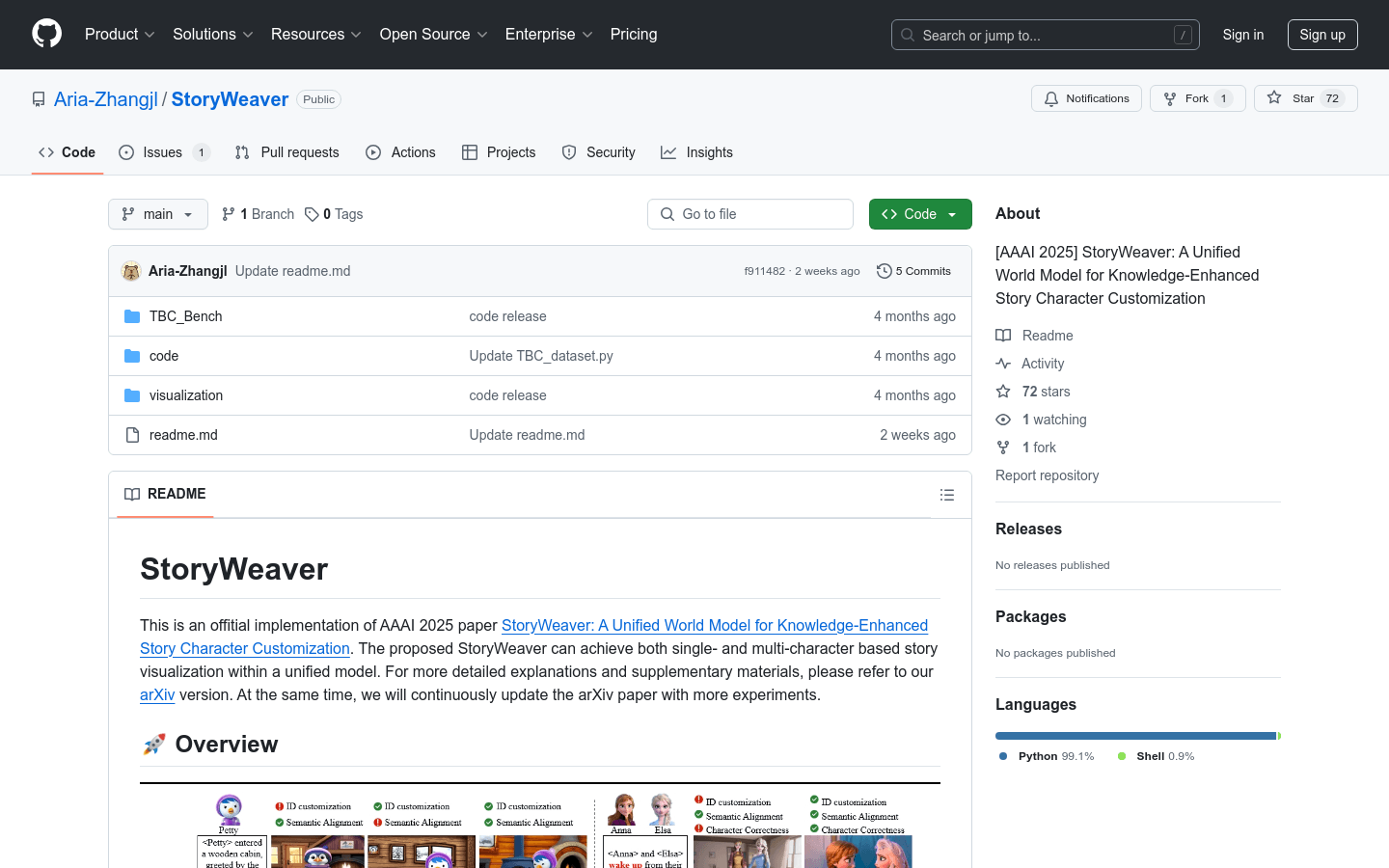

Storyweaver
Overview :
StoryWeaver is a unified world model designed for knowledge-enhanced story character customization, aiming to visualize both single and multi-character stories. Based on the AAAI 2025 paper, this model processes character customization and visualization within a unified framework, which is significant for natural language processing and artificial intelligence. Key advantages of StoryWeaver include its ability to handle complex storytelling scenarios and its capacity for continuous updates and feature expansions. The product background information indicates that the model will be regularly updated on arXiv, adding more experimental results.
Target Users :
StoryWeaver is primarily targeted at researchers and developers in the fields of natural language processing and artificial intelligence. They can utilize StoryWeaver for research on story generation, character customization, and related applications.
Use Cases
Researchers conduct experiments on story generation and character customization using the StoryWeaver model.
Developers create educational software based on the StoryWeaver model to help students understand storylines and characters.
Businesses leverage the StoryWeaver model for marketing by enhancing brand influence through storytelling.
Features
- Single and multi-character story visualization: StoryWeaver can visualize stories of different characters under a unified model.
- Knowledge enhancement: The model utilizes technologies such as knowledge graphs to enhance character customization in stories.
- Continuous experimental updates: Regular updates on arXiv, adding more experimental results to validate the model's effectiveness.
- Open-source code: The project's code is available on GitHub, facilitating use and improvements by researchers and developers.
- Training and sampling scripts: Shell scripts are provided for easy model training and story sampling.
- Visualization result display: Showcasing visualization results for both single-character and multi-character stories.
How to Use
1. Visit the GitHub project page and clone the code to your local machine.
2. Install the necessary dependencies according to the instructions in the project README file.
3. Train the model using the provided shell script: `bash train.sh`.
4. Sample stories: `bash sample.sh`.
5. View the visualization results for both single-character and multi-character stories.
6. Modify the code as needed to suit different research or application scenarios.
Featured AI Tools

Gemini
Gemini is the latest generation of AI system developed by Google DeepMind. It excels in multimodal reasoning, enabling seamless interaction between text, images, videos, audio, and code. Gemini surpasses previous models in language understanding, reasoning, mathematics, programming, and other fields, becoming one of the most powerful AI systems to date. It comes in three different scales to meet various needs from edge computing to cloud computing. Gemini can be widely applied in creative design, writing assistance, question answering, code generation, and more.
AI Model
11.4M
Chinese Picks

Liblibai
LiblibAI is a leading Chinese AI creative platform offering powerful AI creative tools to help creators bring their imagination to life. The platform provides a vast library of free AI creative models, allowing users to search and utilize these models for image, text, and audio creations. Users can also train their own AI models on the platform. Focused on the diverse needs of creators, LiblibAI is committed to creating inclusive conditions and serving the creative industry, ensuring that everyone can enjoy the joy of creation.
AI Model
6.9M












